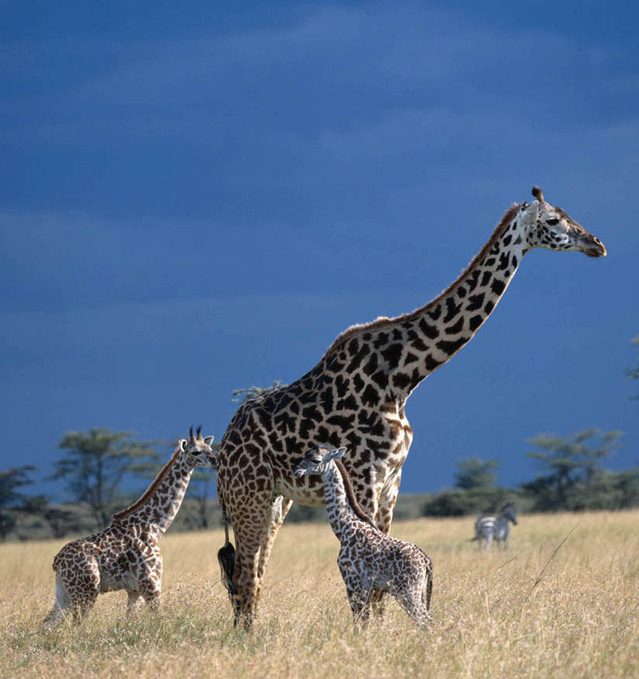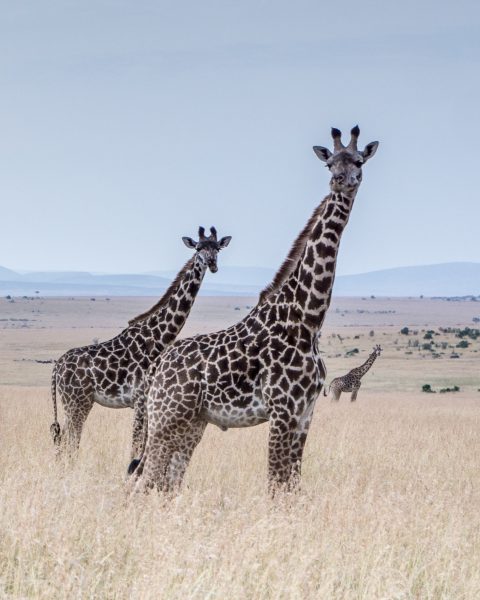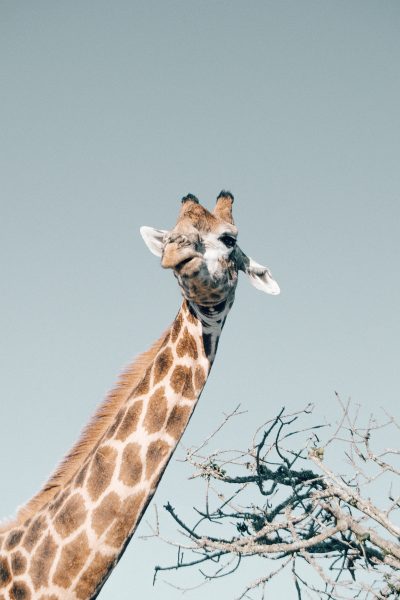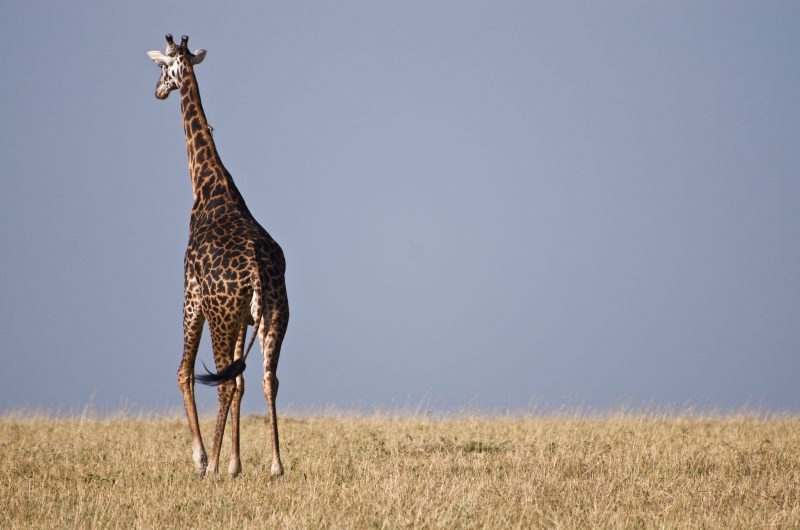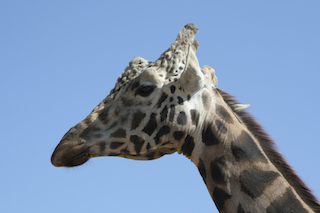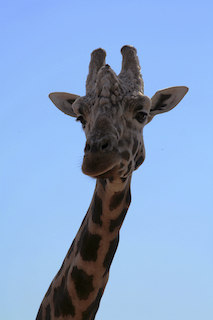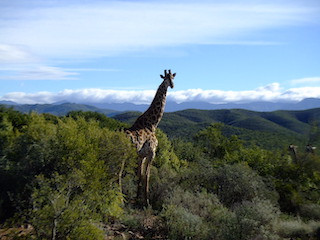Status Of Giraffe Species In Kenya
There are nine different species of giraffes. At an average height of 5.6m from the ground to the horns, the tallest land-based mammal in the world is giraffe. Despite its tallness, it is closely related to the smaller Okapi, that is found elusively in the dense tropical forests. In the wild, giraffes can go on living for up to 25 years and in captivity up to 28 years. Giraffes are relatively social and non-territorial animals that go about tending their affairs with an air of serenity.
Characteristic physical features
A giraffe’s back slopes steeply from the shoulders. Their tails are long and thin, measuring about 100cm in length. At the end of the tail, there is a black tussock that whisks away flies and other insects. Characterized by not only its distinctive pattern but also its long neck and legs, many people first believed that it was a cross between a camel and a leopard. The belief gave birth to its scientific name, Giraffa Camelopardalis.
Spotted coat pattern
Giraffes have a spotted coat. Its skin color is tan with dark brown patches on males and light brown patches on females. They can be sharp- or fuzzy-edged; large, medium, or small in size; or yellow to black. The pattern varies in each species in the whiteness surrounding the patches, its color, and its size. They have a camouflage effect with the different habitats helping them while foraging in forests.
Mysterious long necks
The giraffe’s neck accounts for almost half its total height. They have seven elongated vertebrae in the necks, just as other hoofed animals and human beings do, however they are much larger and longer in shape. Each vertebra is more than 10 inches in length. The joint that connects the vertebra to the skull allows it to tilt its head upward until perpendicular to the ground. The giraffe’s long neck has unusually elastic blood vessels with some specialized valves that help offset the buildup or pooling of blood in their bodies when it raises, lowers, or swings its head quickly. Its heart is capable of circulating blood to its brains when they stoop or lean over to drink. The heart pumps at three times the pressure of a human being. The blood circulatory system is complex, which is not fully understood even by zoologists. The male giraffe’s fight for dominance and right to mate is fascinating to watch. They wrestle and strike at a rival’s body using their long muscular necks and twine it around each other. Whoever goes off balance is the loser. The encounters rarely lead to serious injury.
Daddy long legs
A giraffe walks and runs in a unique manner. It moves both legs on the body’s one side in unison and then the other – a movement called pacing. It can only run or gallop in brief spurts but in a similar style to other animals, swinging its rear and front legs together. The sturdy, long legs are longer than an average person’s height. The front ones are longer than the back ones.
Horns to protect
The horns are skin-colored bone protuberances called knobs or ossicones situated on their heads above the eyes and covered with hair, fur, and skin. The horns grow up to five inches long. Females have a smaller, thinner ossicone with a little tuft of hair, while male horns are thick and bald on the top. Males can grow a second pair just behind the first pair. When they fight, they swing their necks at each other called necking to show-off their strength. During such tussles, the knobs protect the head from injury.
Differences in height
The male giraffe is taller and heavier than the female. Males weigh up to 3,000 pounds or 1,200kg and grow to be 19 feet tall or 5m, while females weigh up to 2,600 pounds or 1,190kg and stand up to 16 feet tall or 4.5m. On an average, females are 1m shorter than bulls.
Outstanding watchtower vision
Giraffes have large eyes with excellent eyesight. They rely on their height and sight to have a continual view at great distances from the herd. The acute sight can watch out for approaching danger by spotting predators at a distance that help them stay alerted. Thus, they also act as natural lookouts for animals like zebras and wildebeests.
Awkward sleeping postures
Giraffes sleep two hours a day with their feet tucked under them. When sleeping, their heads rest on their hindquarters, with the neck forming an arch. They sleep lightly in an upright position, with twitching ears and half-closed eyes. They usually sleep standing up because if they lie down, they will have to stand up again which is an awkward and time-consuming process.
Sound of silence
Giraffes are rarely heard and are considered silent mammals, but when disturbed, they will growl, grunt and snort to warn other giraffes of the danger. Giraffes communicate by infrasonic sound. Some other communication sounds are mooing, moaning, hissing, snoring, and flutelike sounds. Mother giraffes search for their lost young by whistling and bellowing calls. And the young return the mother’s calls by mewing or bleating. While courting, males may cough raucously.
Symbiotic relationship partners
Giraffes are host to ticks, which the oxpecker birds who rest on their backs and necks remove from the skin. Therefore, giraffes and oxpeckers enjoy a mutually beneficial relationship.
Threats from predators
Adult giraffes can defend themselves from predators. They remain vigilant and deliver deadly blows using their front hooves. Hence, few predators attack them. Most predators target young, elderly, or sick giraffes. Lions use their pride to catch their victim. Crocodiles may also attack giraffes when they come to drink water at waterholes.
Conservation of population
Giraffes face several threats such as habitat destruction due to logging and farming. Historical distribution is fragmented through disease as well. People also hunt them for meat, coat and hides, especially their tails which are valued by many tribes in Africa as good luck bracelets, string for sewing beads and fly whisks. The Maasai tribes use the coating for coverings of shields. Manufacturers turn the thick skin into buckets, whips, reins, straps for harnesses and musical instruments. The conservation status of giraffes is currently under review . After researchers had surveyed the giraffe population in trucks, by foot, by remote cameras, and by aircraft, they confirmed that since 1985 their numbers had plummeted 40%, with some subspecies even direr. Reticulated giraffe population has declined by 80%. To help preserve giraffe population, people must boycott products made with their body parts and urge others to do the same.
5 Frequently Asked Questions About Giraffe Species
To receive a colourful digibook about giraffe with videos, images and text, please fill out the following form or simply email us on safaris@safari-center.com

